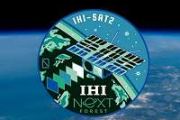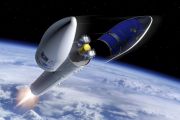
Copernical Team
Starfighters Accelerates Efforts in Space Launch Development
 Starfighters Space, Inc. has marked a major milestone in its space launch program with the development and production of Star Launch I test articles in collaboration with Innoveering, LLC, a subsidiary of GE Aerospace.
"Partnering with Innoveering brings the expertise we need to deliver on our vision for reliable, cost-effective launch vehicles," said Rick Svetkoff, CEO of Starfighters. "T
Starfighters Space, Inc. has marked a major milestone in its space launch program with the development and production of Star Launch I test articles in collaboration with Innoveering, LLC, a subsidiary of GE Aerospace.
"Partnering with Innoveering brings the expertise we need to deliver on our vision for reliable, cost-effective launch vehicles," said Rick Svetkoff, CEO of Starfighters. "T Achieving High Precision for In-Orbit Instrument Calibration
 One of the most complex challenges in space-based remote sensing is attaining the high level of instrument calibration accuracy required while in orbit. The Moon, as an exoatmospheric calibration source, presents a promising solution. However, its current status as an absolute reference has accuracy limitations of 5-10%, which falls short of the rigorous requirements for Earth science observatio
One of the most complex challenges in space-based remote sensing is attaining the high level of instrument calibration accuracy required while in orbit. The Moon, as an exoatmospheric calibration source, presents a promising solution. However, its current status as an absolute reference has accuracy limitations of 5-10%, which falls short of the rigorous requirements for Earth science observatio Blue Origin's first orbital launch now targeting Sunday
This request seems a bit unusual, so we need to confirm that you're human. Please press and hold the button until it turns completely green. Thank you for your cooperation!
Press and hold the button
If you believe this is an error, please contact our support team.
185.132.36.159 : c871acc2-69b0-4fa7-868e-fdbcd185
Spacecraft buzzes Mercury's north pole and beams back stunning photos
This request seems a bit unusual, so we need to confirm that you're human. Please press and hold the button until it turns completely green. Thank you for your cooperation!
Press and hold the button
If you believe this is an error, please contact our support team.
185.132.36.159 : e9a897c6-6ca0-4c95-a632-55c82fdf
How to deploy and talk to LEAVES on Venus
This request seems a bit unusual, so we need to confirm that you're human. Please press and hold the button until it turns completely green. Thank you for your cooperation!
Press and hold the button
If you believe this is an error, please contact our support team.
185.132.36.159 : bf99b9dc-82d5-436c-8f8f-53ece988
Space Launch System could launch a Titan balloon mission
This request seems a bit unusual, so we need to confirm that you're human. Please press and hold the button until it turns completely green. Thank you for your cooperation!
Press and hold the button
If you believe this is an error, please contact our support team.
185.132.36.159 : 40a59da5-e4b8-4936-b44c-616c024d
SpaceX sends up 1st Kennedy Space Center launch of the year
This request seems a bit unusual, so we need to confirm that you're human. Please press and hold the button until it turns completely green. Thank you for your cooperation!
Press and hold the button
If you believe this is an error, please contact our support team.
185.132.36.159 : f9cbd9ec-a722-4665-90ac-8e69d920
Discovering hidden wrinkles in spacecraft membranes with a single camera
This request seems a bit unusual, so we need to confirm that you're human. Please press and hold the button until it turns completely green. Thank you for your cooperation!
Press and hold the button
If you believe this is an error, please contact our support team.
185.132.36.159 : b48a90c9-443c-4d78-8f34-c9910ba9
A Sustainable Development Goal for space?
This request seems a bit unusual, so we need to confirm that you're human. Please press and hold the button until it turns completely green. Thank you for your cooperation!
Press and hold the button
If you believe this is an error, please contact our support team.
185.132.36.159 : c1f27aff-0dba-467c-992e-5eb955d9
Perseverance's 2024 journey: From SHERLOC's revival to ancient rocks
This request seems a bit unusual, so we need to confirm that you're human. Please press and hold the button until it turns completely green. Thank you for your cooperation!
Press and hold the button
If you believe this is an error, please contact our support team.
185.132.36.159 : 0506a3f7-ac11-49b6-8907-c62a72fe






























